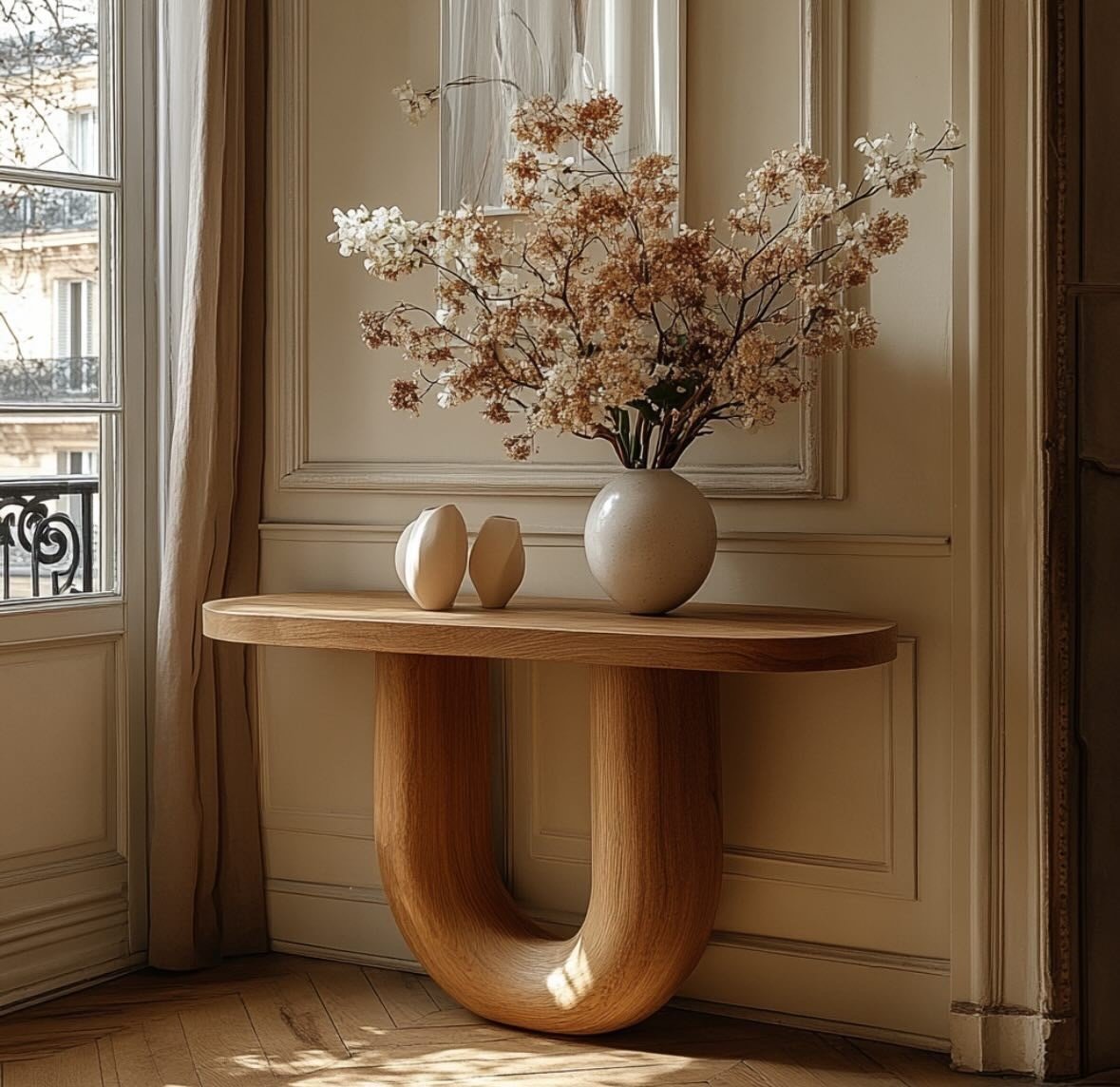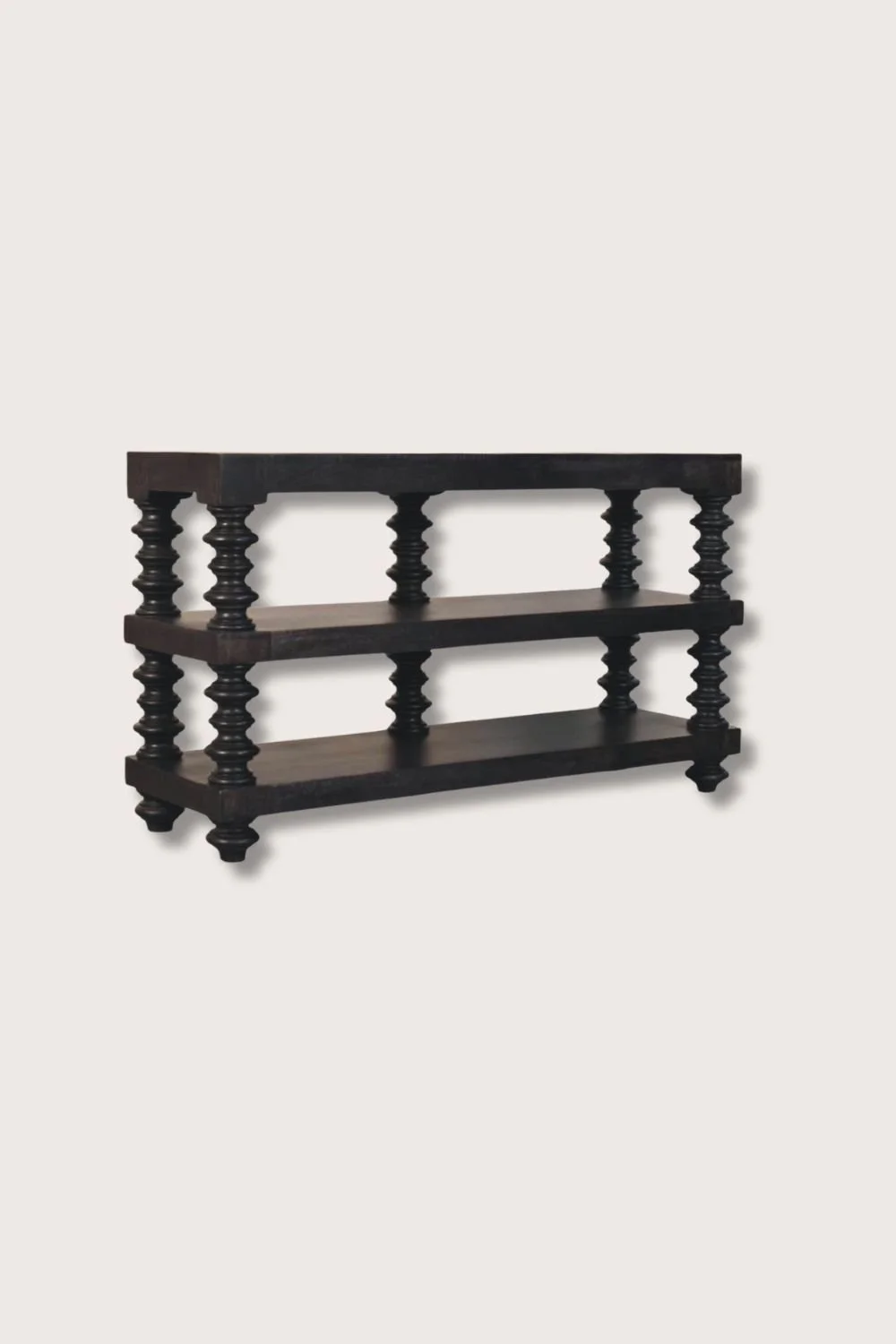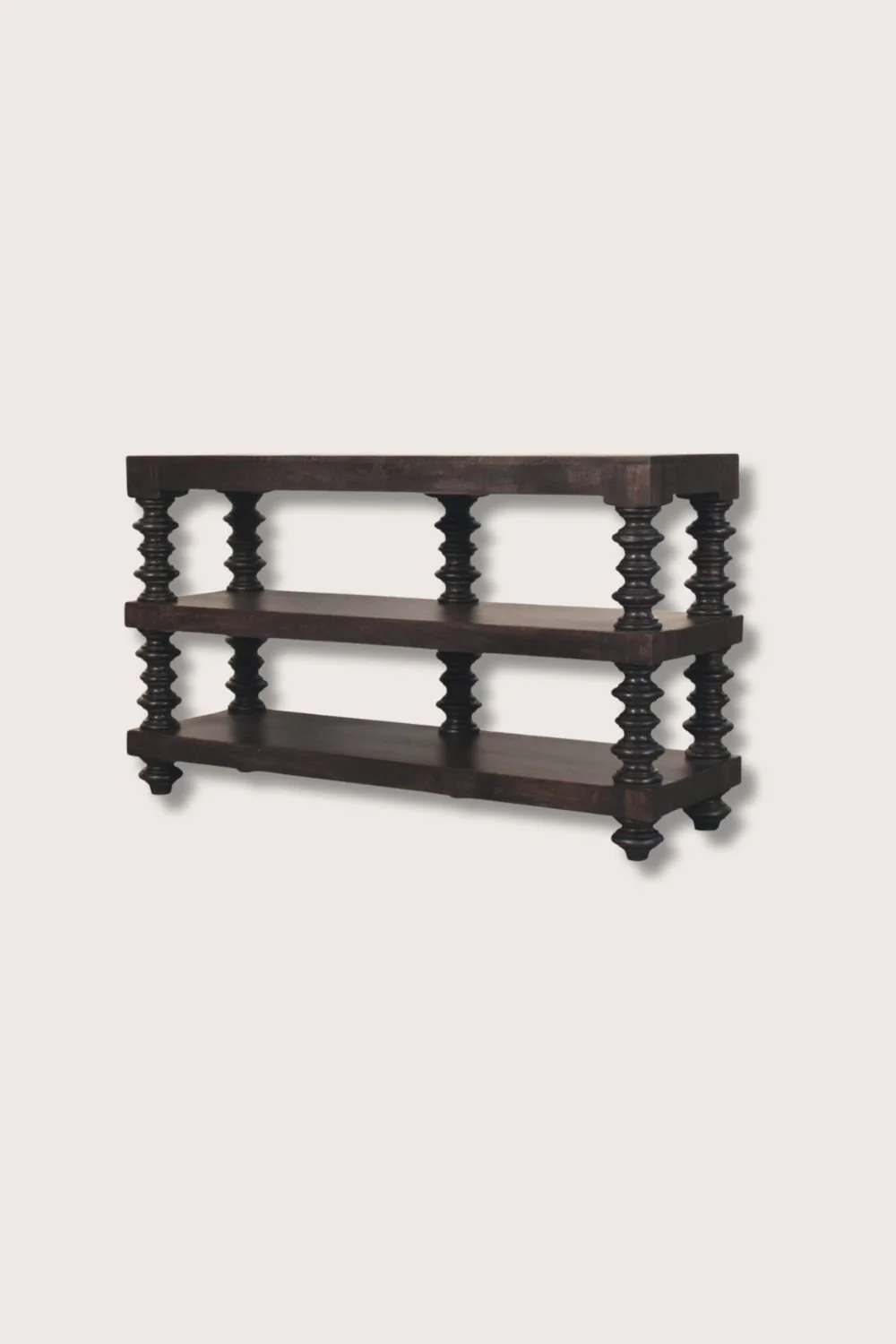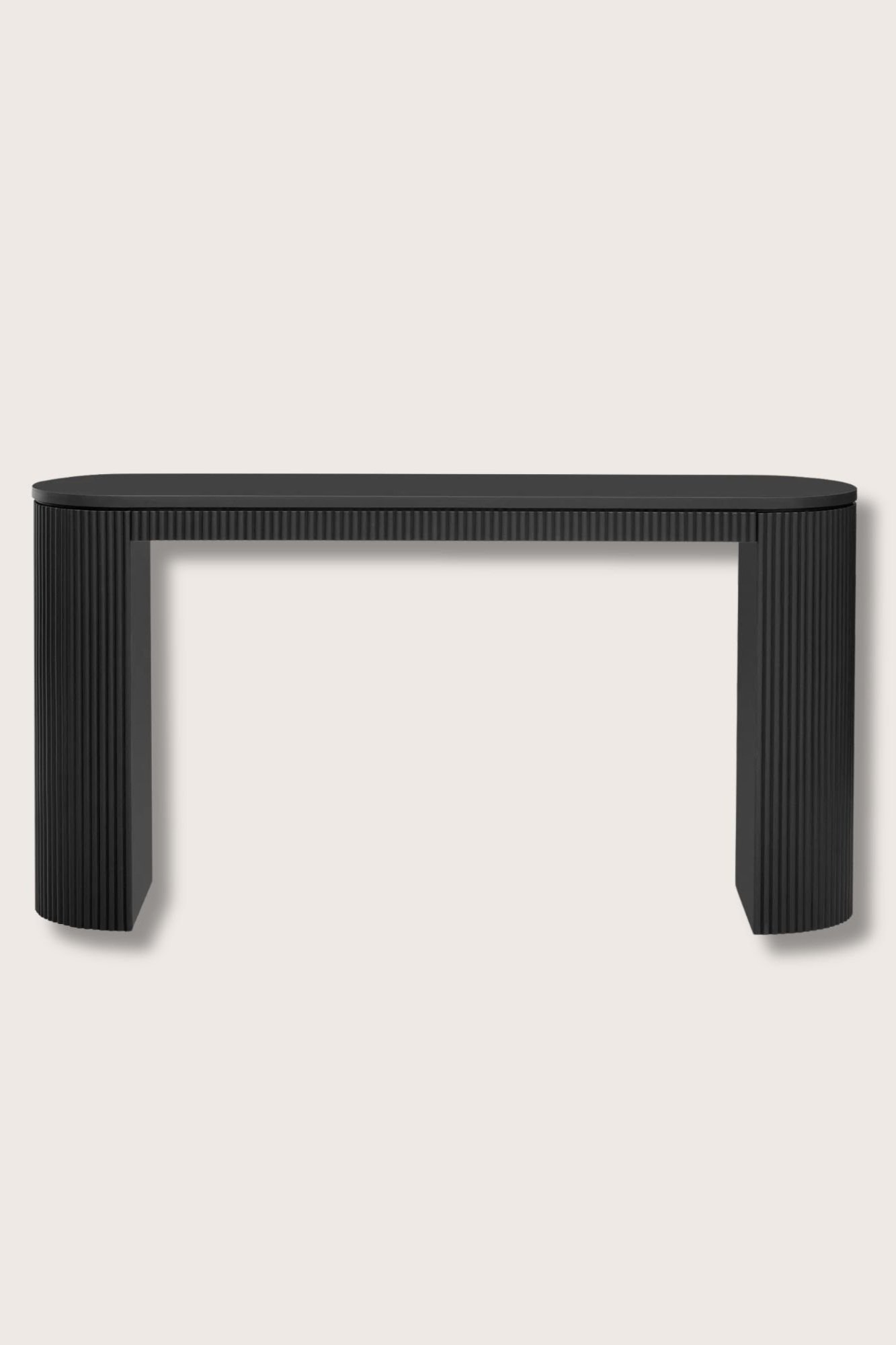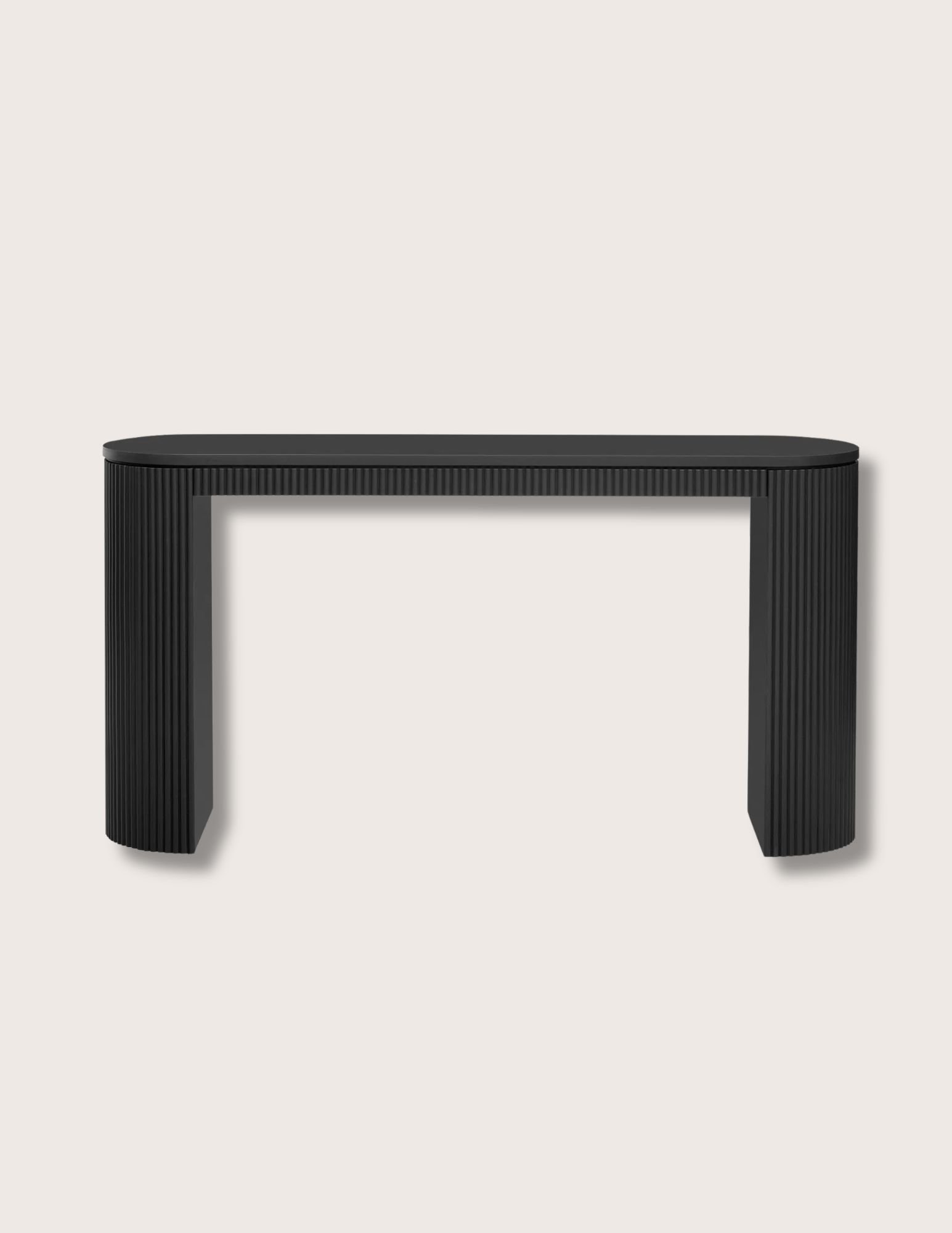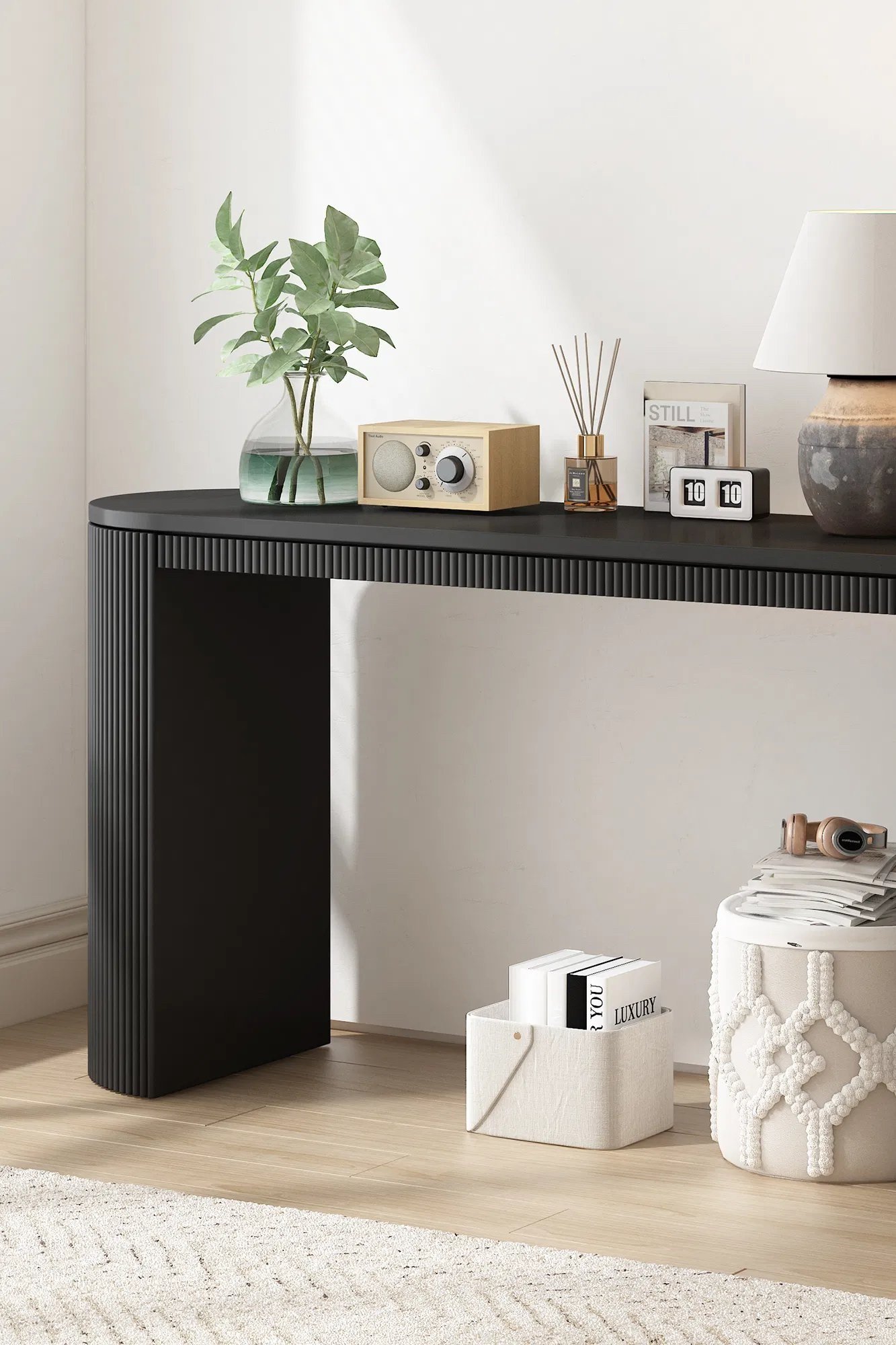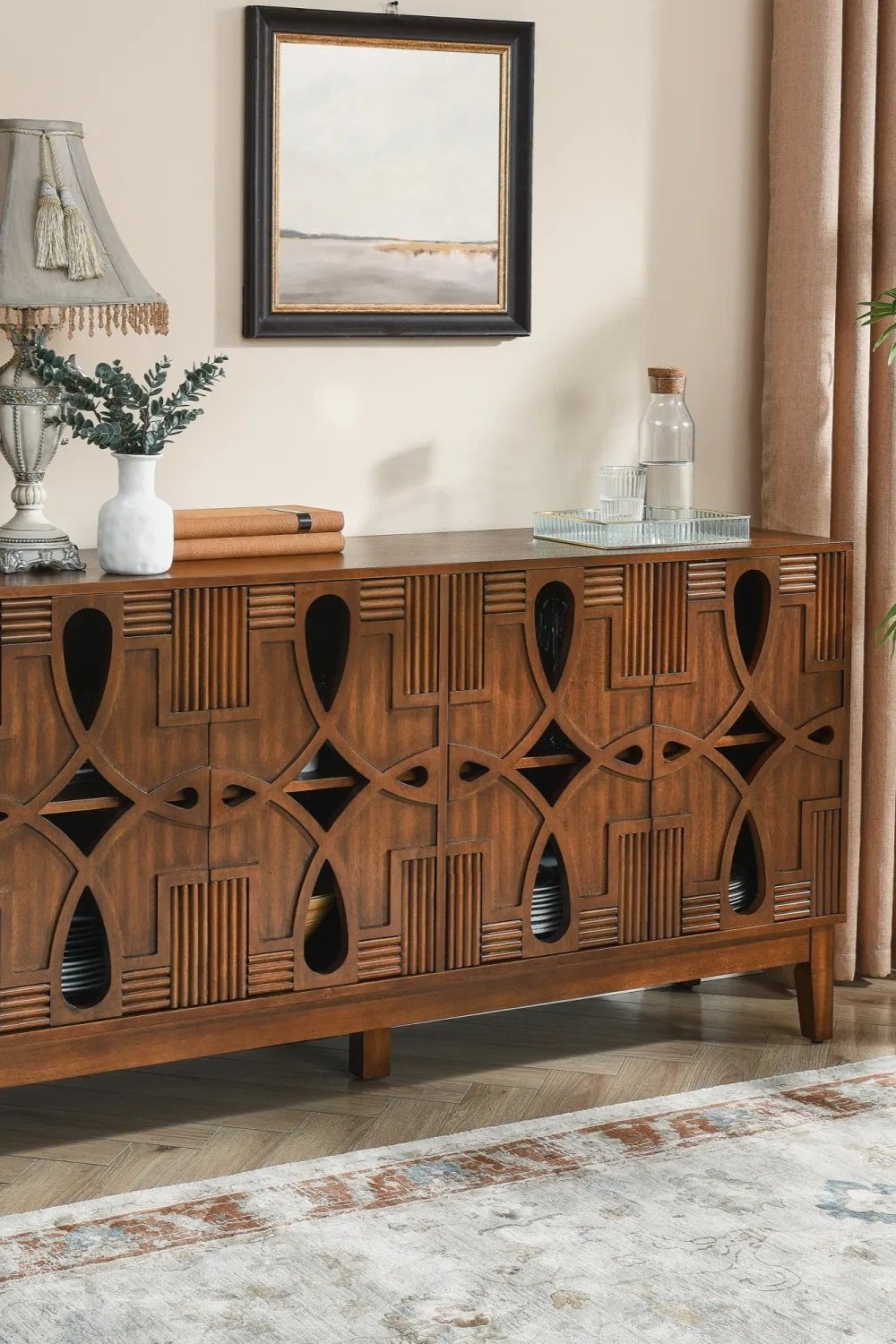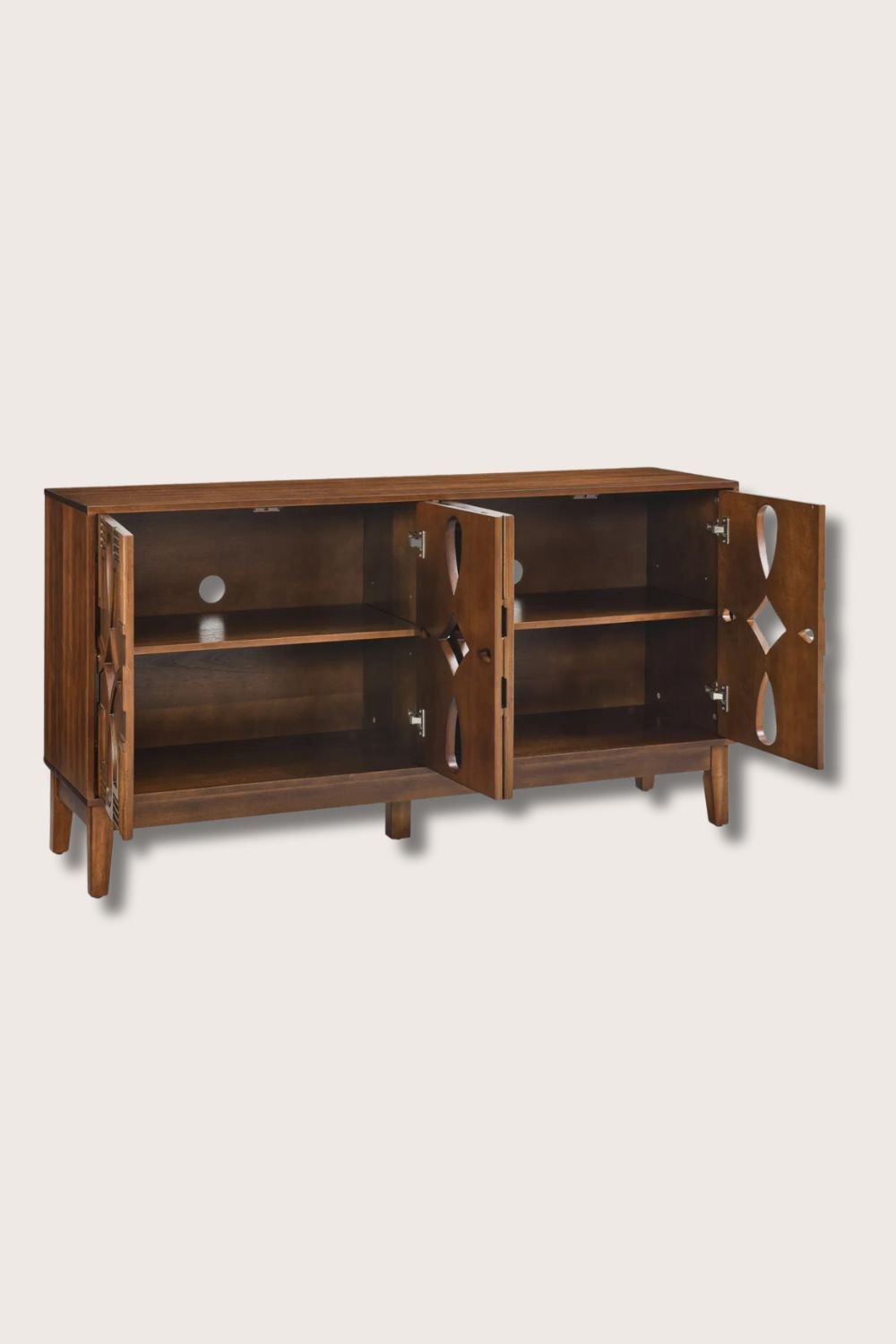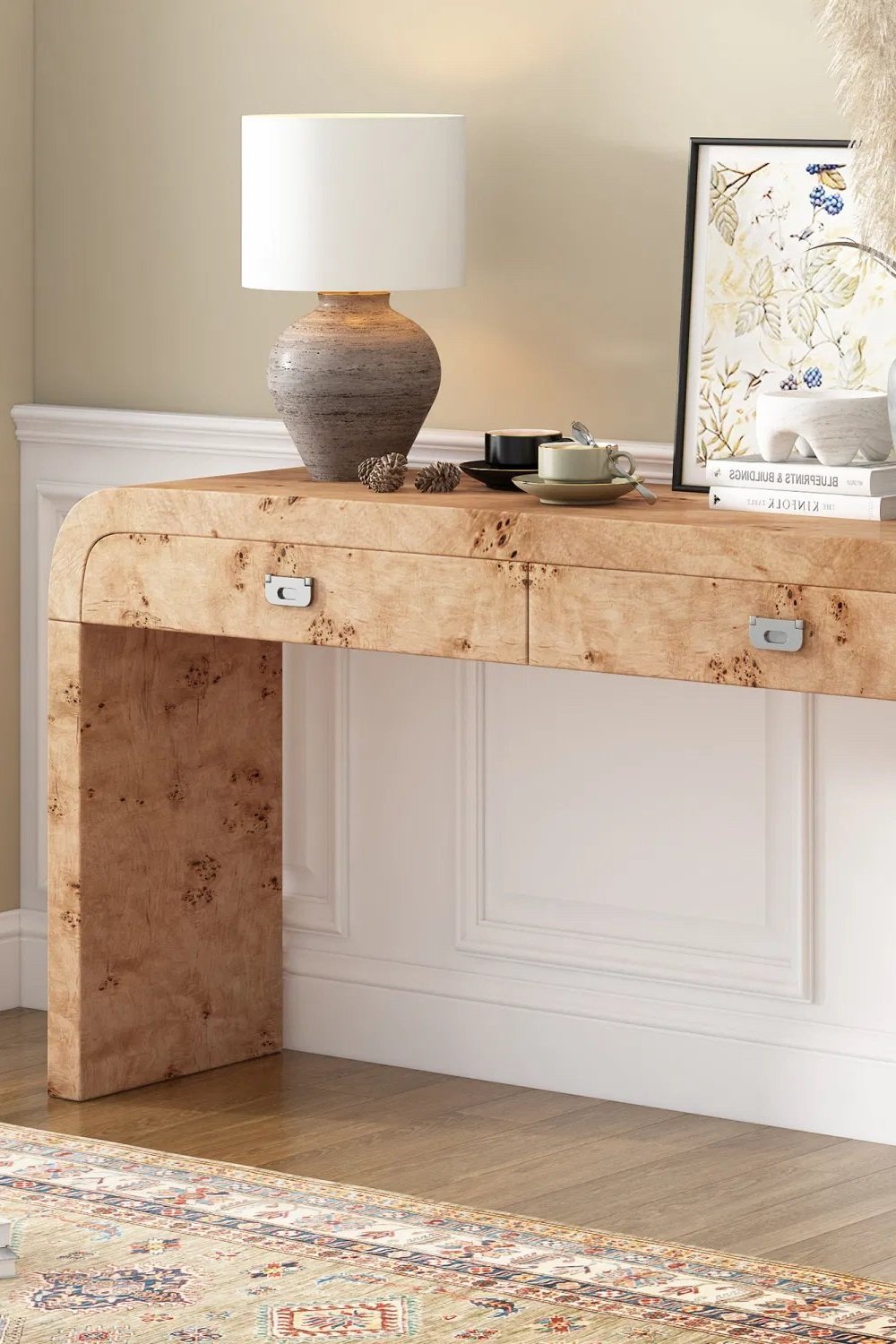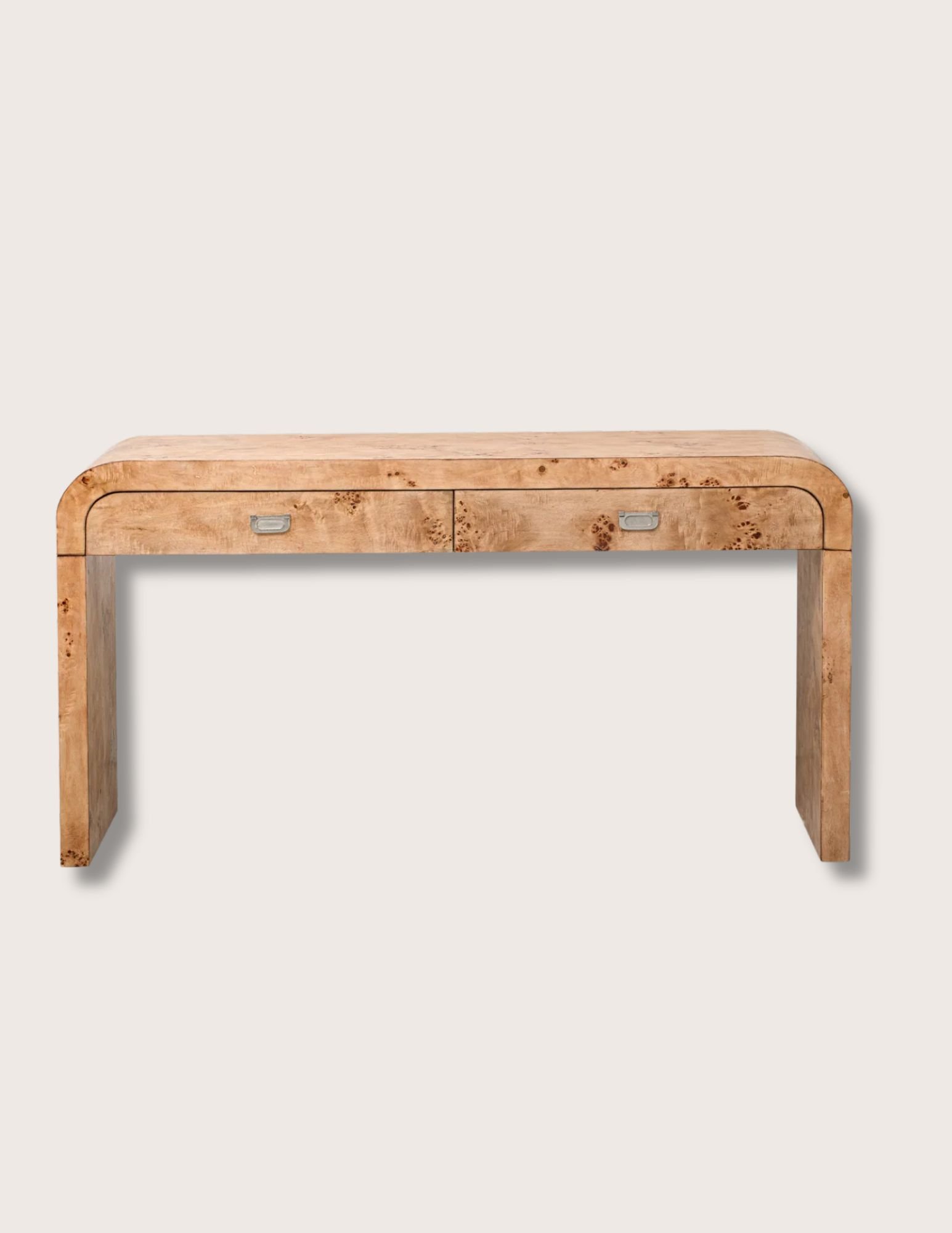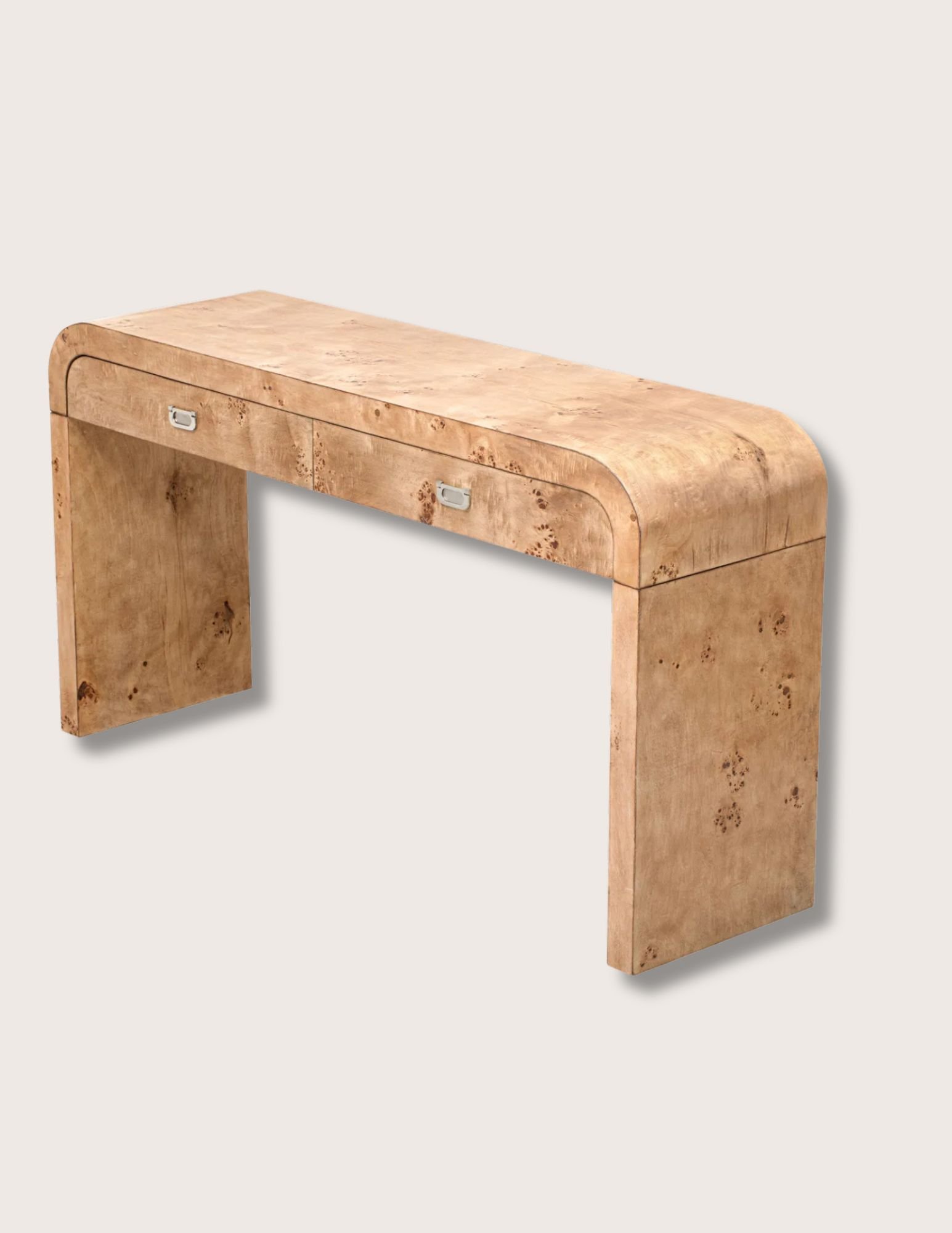 Image 1 of 1
Image 1 of 1


Hawkins Console Table
Details
Lighter than air, the simple elegance of our Hawkins Console Table feels like magic. A simple geometric shape formed out of 20 mm thick transparent acrylic with 92% transparency, your decor will look like it’s floating in mid air. An easy addition to your interiors, the table comes with no assembly required. Simply unpack and it's ready to use. Stronger than ordinary tempered glass, the U-shaped structure of the acrylic is exceptionally strong, holding as much as 110 lbs with ease. Slip-proof pads on the table legs prevent scratches to hardwood floors while increasing stability. And standing 103 inches tall, it's perfectly placed for anything you want to put on display. Show off works of art, stacks of books, rows of awards or a beautiful arrangement of flowers. An effortlessly stylish and modern addition to your living room, dining room, entryway or den, the Hawkins Console Table will change the way you see your rooms. Just like magic.
Editors' Note
Pieces from our Hawkins Collection are named for Walter Lincoln Hawkins — a pioneer of polymer chemistry, whose work helped lay the foundation for acrylic furnishings like these. Born in 1911 in Washington, DC., Hawkins — whose mother was a science teacher and father practiced law — had both a curiosity and early aptitude for science. Known to disassemble his toys and rebuild them to make new ones, he built a working radio at a young age so that he could listen in to baseball games. Graduating from D.C.'s prestigious, historically Black, Paul Laurence Dunbar High School, Hawkins attended Rensselaer Polytechnic Institute in upstate New York as one of only two Black students. Afterward, in 1932, he pursued graduate studies, obtaining a master's degree in chemistry from Howard University, followed by a doctorate from McGill University in Montreal. Returning to New York, he later took on a postdoctoral fellowship at Columbia University. In 1942, Hawkins went to work for Bell Laboratories, becoming the company's first Black employee. There he was tasked with developing petroleum-based alternatives to rubber in response to shortages caused by WWII. He would remain at Bell for more than 30 years, becoming Supervisor of Applied Research by 1963 and being named head of his own department in 1972. Developing a talent and reputation for extending the lives of polymers, Hawkins' research had revolutionary implications for the construction and maintenance of telephone lines, which had previously been both expensive and toxic. Replacing older polyethylene covers, which degraded quickly in sunlight, Hawkins and partner, Vincent L. Lanza introduced a new polymer capable of withstanding not only sunlight but extremes of both heat and cold for extended periods. First proposed in 1956, Hawkins and Lanza's plastic cable sheaths were in production by the 60s and remain in use to this day. Capable of lasting up to 70 years, the plastic coverings Hawkins devised reduced costs by billions, enabling phone service to expand globally. His other contributions include advanced methods for estimating the longevity of plastics, as well as new methods for recycling and reusing them. In 1975, Hawkins became the first African American elected to the National Academy of Engineering, before retiring from Bell in 1976. Following retirement Hawkins remained active both as a researcher and educator, serving as the Research Director for the Plastics Institute of America from his retirement to 1983, in addition to teaching and consulting. While at Bell, he worked diligently to widen the doors through which he had come, establishing the Bell Laboratories Summer Research Program for Minorities and Women and the Bell Laboratories Cooperative Research Fellowship Program. Later he would become the first chairman of the American Chemical Society's Project SEED, which aimed to increase the number of non-white students pursuing careers in science. By the time of his passing in 1992, Walter Lincoln Hawkins had been awarded some 147 patents (18 U.S., 129 foreign) in addition to authoring 3 books and more than 50 papers. He was posthumously inducted into the National Inventors Hall of Fame In 2010.
Details
Lighter than air, the simple elegance of our Hawkins Console Table feels like magic. A simple geometric shape formed out of 20 mm thick transparent acrylic with 92% transparency, your decor will look like it’s floating in mid air. An easy addition to your interiors, the table comes with no assembly required. Simply unpack and it's ready to use. Stronger than ordinary tempered glass, the U-shaped structure of the acrylic is exceptionally strong, holding as much as 110 lbs with ease. Slip-proof pads on the table legs prevent scratches to hardwood floors while increasing stability. And standing 103 inches tall, it's perfectly placed for anything you want to put on display. Show off works of art, stacks of books, rows of awards or a beautiful arrangement of flowers. An effortlessly stylish and modern addition to your living room, dining room, entryway or den, the Hawkins Console Table will change the way you see your rooms. Just like magic.
Editors' Note
Pieces from our Hawkins Collection are named for Walter Lincoln Hawkins — a pioneer of polymer chemistry, whose work helped lay the foundation for acrylic furnishings like these. Born in 1911 in Washington, DC., Hawkins — whose mother was a science teacher and father practiced law — had both a curiosity and early aptitude for science. Known to disassemble his toys and rebuild them to make new ones, he built a working radio at a young age so that he could listen in to baseball games. Graduating from D.C.'s prestigious, historically Black, Paul Laurence Dunbar High School, Hawkins attended Rensselaer Polytechnic Institute in upstate New York as one of only two Black students. Afterward, in 1932, he pursued graduate studies, obtaining a master's degree in chemistry from Howard University, followed by a doctorate from McGill University in Montreal. Returning to New York, he later took on a postdoctoral fellowship at Columbia University. In 1942, Hawkins went to work for Bell Laboratories, becoming the company's first Black employee. There he was tasked with developing petroleum-based alternatives to rubber in response to shortages caused by WWII. He would remain at Bell for more than 30 years, becoming Supervisor of Applied Research by 1963 and being named head of his own department in 1972. Developing a talent and reputation for extending the lives of polymers, Hawkins' research had revolutionary implications for the construction and maintenance of telephone lines, which had previously been both expensive and toxic. Replacing older polyethylene covers, which degraded quickly in sunlight, Hawkins and partner, Vincent L. Lanza introduced a new polymer capable of withstanding not only sunlight but extremes of both heat and cold for extended periods. First proposed in 1956, Hawkins and Lanza's plastic cable sheaths were in production by the 60s and remain in use to this day. Capable of lasting up to 70 years, the plastic coverings Hawkins devised reduced costs by billions, enabling phone service to expand globally. His other contributions include advanced methods for estimating the longevity of plastics, as well as new methods for recycling and reusing them. In 1975, Hawkins became the first African American elected to the National Academy of Engineering, before retiring from Bell in 1976. Following retirement Hawkins remained active both as a researcher and educator, serving as the Research Director for the Plastics Institute of America from his retirement to 1983, in addition to teaching and consulting. While at Bell, he worked diligently to widen the doors through which he had come, establishing the Bell Laboratories Summer Research Program for Minorities and Women and the Bell Laboratories Cooperative Research Fellowship Program. Later he would become the first chairman of the American Chemical Society's Project SEED, which aimed to increase the number of non-white students pursuing careers in science. By the time of his passing in 1992, Walter Lincoln Hawkins had been awarded some 147 patents (18 U.S., 129 foreign) in addition to authoring 3 books and more than 50 papers. He was posthumously inducted into the National Inventors Hall of Fame In 2010.
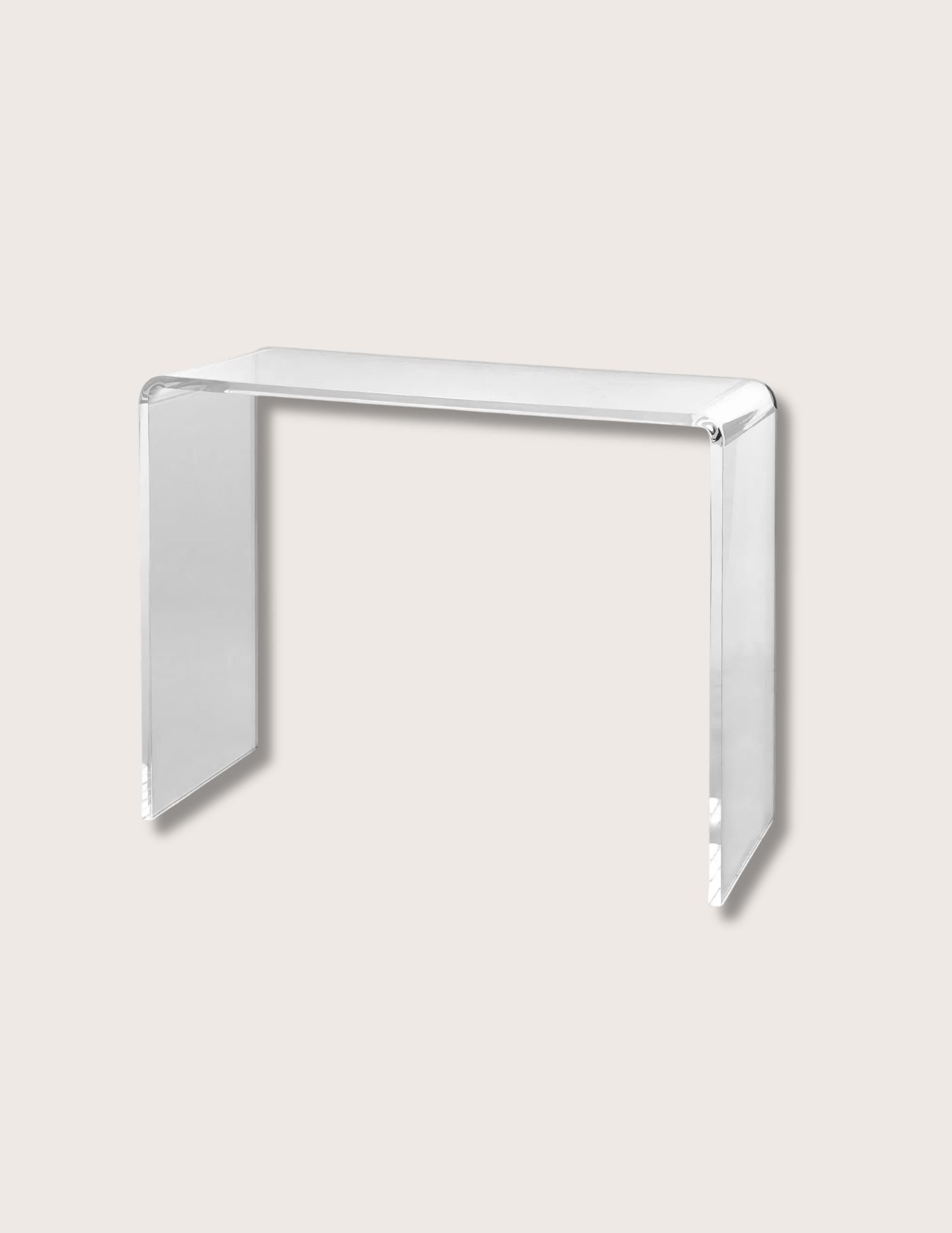
Additional Details
Single console table
Color: Clear
Material: Acrylic
Dimensions: 48" x 80" x 103"
Weight: 25.8 lbs
Weight capacity: 110 lbs
Easy to assemble -- no tools required
Remove protective film after installation
Avoid using alcohol and prolonged outdoor exposure
Made to order
Ships within the continental US in 3-4 weeks

